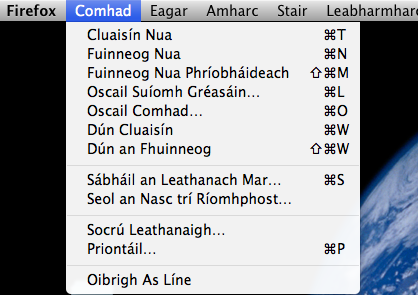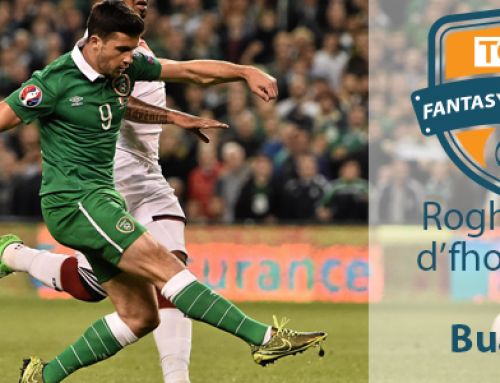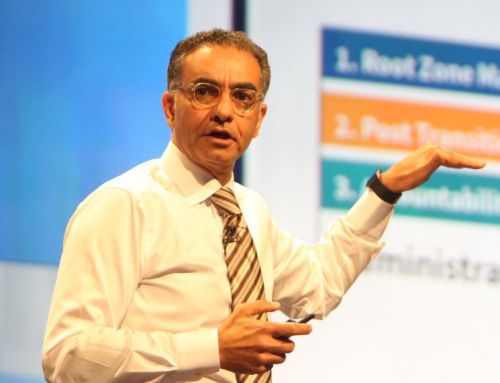 Michal Boleslav Měchura is a language technologist, which must be the coolest job description in the world, in my geeky opinion. I take it to mean that he uses his programming skills to build software resources for languages, and that he uses his understanding as a linguist to make that software as good as it can be.
Michal Boleslav Měchura is a language technologist, which must be the coolest job description in the world, in my geeky opinion. I take it to mean that he uses his programming skills to build software resources for languages, and that he uses his understanding as a linguist to make that software as good as it can be.
We’ve never met, but I use some of the tools he’s developed on a daily basis and, as we say in Irish, tá ríomh-aithne agam air – we have an online acquaintance.
Coming from the Czech Republic, Michal approaches the Irish language with a more objective view than anyone born here, which is why I think his post on 10 REASONS WHY IRISH IS AN ABSOLUTELY AWESOME LANGUAGE, is well worth reading.
“Mine are proper linguistic reasons”, explains Michal. “None of that starry-eyed sentimental nonsense about the language being ‘beautiful’ or ‘romantic’!”
You really should read the whole article, but if you’re just here for the headline, here’s Michal’s Reason Number 6:
6. Irish has several verbs to be
It seems simple to use the verb to be in English, as in the house is small or my mother is a singer or that woman is our teacher. It’s always some form of the same verb, to be. But Irish has different ways for saying these things, depending on the meaning.
The basic verb to be is bí in Irish or, in the present tense, tá is. It can be used for situations when you’re simply attributing a property to an entity, such as the property beag small to the entity an teach the house. This is easy and it takes care of our first sentence: tá an teach beag, the house is small.
The remaining two sentences cannot be translated with this verb because they imply a different kind of ‘being’. Let’s tackle sentence number two first: my mother is a singer. The sentence expresses class membership: a relation between an entity (mo mháthair my mother) and a class the entity belongs to (amhránaí a singer). You cannot use the verb bí here: *tá mo mháthair amhránaí is wrong, hand-wringingly wrong. To express the class membership relation in Irish, you must use a construction called the classifying copula: is amhránaí í mo mháthair. It uses the defective verb is (whose similarity to the English is is probably purely coincidental) and can be translated literally as: is a singer, she, my mother.
The third one, that woman is our teacher, is different again. It expresses a relation between two linguistic labels (an bhean sin that woman and ár múinteoir our teacher) and tells you that they both refer to one and the same entity, that they are one and the same person. For this you must use a construction called the identity copula: is í ár múinteoir í an bhean sin, literally: is she our teacher, she, that woman. This again uses the defective verbis, but in a different pattern.
So here we have the three basic ways of saying that something ‘is’ something in Irish. There are more twists and turns to the story but we won’t go into the details here. As you can see from this extremely basic introduction, it’s more complicated than English or most other European languages because you must pay close attention to the nature of the relation that your ‘is’ expresses. As you can imagine, this poses great difficulty for second-language learners of Irish who keep wanting to use the basic verb bí everywhere. But if you’re like me and if you have experience in object-oriented computer programming, you won’t find it so difficult. Think about it like this: the classifying copula is basically a relation between a class and an instance, while the identifying copula is like two variables referring to the same object. See? Speaking Irish is like programming in an object-oriented programming language!
Mo bhuíochas leat a Mhichíl – mar a dúirt duine eile: nach breá an Béarla atá agat, bail ó Dhia ort!
Source: 10 REASONS WHY IRISH IS AN ABSOLUTELY AWESOME LANGUAGE by Michal Boleslav Měchura.





![Hello as Gaeilge [Video]](https://technology.ie/wp-content/uploads/2016/09/Shannon-Bryan-singing-hello-as-gaeilge-500x383.jpg)





RT @blacknight: Speaking Irish is like Programming in an Object-Oriented Language: http://t.co/b2YSXw8xCY #gaeilge
Speaking Irish is like Programming in an Object-Oriented Language http://t.co/O3bCxAxTab via @blacknight
RT @blacknight: Speaking Irish is like Programming in an Object-Oriented Language: http://t.co/b2YSXw8xCY #gaeilge
Speaking Irish is like Programming in an Object-Oriented Language http://t.co/fRAX5vzrl8 #gaeilge
Surely, ‘award-winning radio producer’ is an equally cool job description!
RT @blacknight: Speaking Irish is like Programming in an Object-Oriented Language: http://t.co/b2YSXw8xCY #gaeilge
@MBM I’ve been trying to get around to getting to grips with OOP for 25 years – and my Irish isn’t that good either ;)
I know enough to appreciate that you’ve put into words what I feel (but am not qualified to say) about the language.
It’s a great piece – well done – and I thought the tech angle would go down well with the readership on this site.
Go raibh maith agat!
RT @conn: Speaking Irish is like Programming in an Object-Oriented Language http://t.co/fRAX5vzrl8 #gaeilge
RT @conn: Speaking Irish is like Programming in an Object-Oriented Language http://t.co/fRAX5vzrl8 #gaeilge
Interesting read – “Speaking Irish is like Programming in an Object-Oriented Language”. http://t.co/NNmuQsS1vL
RT @coderdojoTramor: Interesting read – “Speaking Irish is like Programming in an Object-Oriented Language”. http://t.co/NNmuQsS1vL